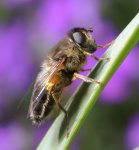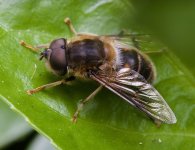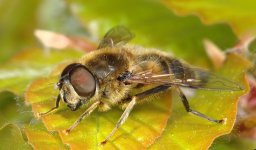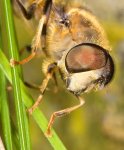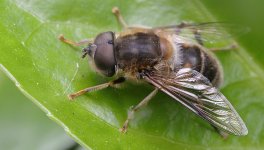Eristalis pertinax (Scopoli, 1763)
Identification
Identification difficulty = 1. ![]()
![]() according to Ball & Morris, 20241
according to Ball & Morris, 20241
Biology
The larva is of the 'long-tailed', aquatic type and occurs in a wide range of situations where wet, decaying vegetable matter accumulates, including wet manure heaps in farmyards. Adults are usually found visiting flowers such as flowering shrubs, white umbels, yellow composites and brambles Rubus sp., and are frequent visitors to gardens. Males often hover in sun-lit rides and can be very abundant in the spring.
Flight period
The following plots show the number of unique records per week excluding those reported to be of immature stages.
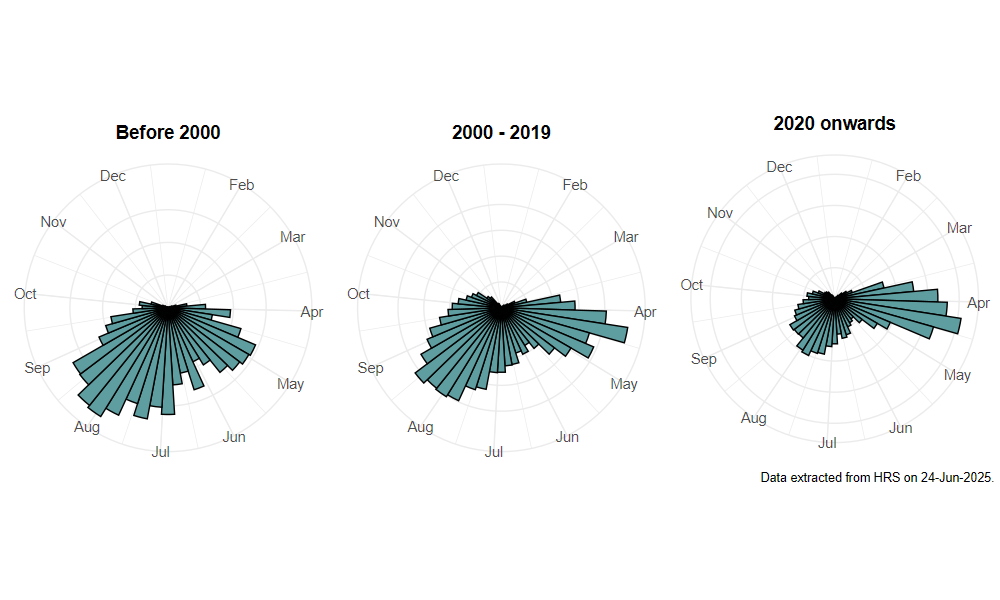
Distribution
One of the commonest species throughout Britain. It has a very long season and is one of the commonest early spring species as well as one of the most abundant on ivy flowers at the end of the season.

Trends
The following plots show the Frescalo TFactor vs year and a map of the rescaled frequency (all records) for the species.
-
Ball, S., & Morris, R. (2024). Hoverflies of Britain and Ireland. WILDGuides (3rd ed.). Oxford: Princeton University Press. ↩
